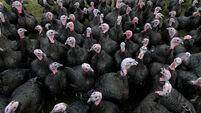74,000 fewer bullocks to kill in 2005
According to the Cattle Movement Monitoring Scheme, the number of males in the 12 to 24 month category were 8% lower at the end of 2004, 74,000 head fewer, which is reflected in the supply of beef cattle, and should leave the fat cattle supply available for the remainder of the year lower than the same period in 2004.
Intake so far this year is down 8% and, based on the CMMS figures, this pattern should continue for the remainder of the year.
On Tuesday, processors reduced quotes for cattle by 6 to 9 cents/kg (2p or 3p/lb), when they re-opened for slaughtering after the holiday week-end, bringing the R and O price back to 252 to 238 cents/kg (90p to 85p/lb), knocking 6 cents/kg (2p/lb) off the R grade price and reducing the price for O grade by 9 cents/kg (3p/lb).
But the drop of at least 45 cents/kg (16p/lb) since early June is not deterring farmers from selling; bookings are backing up at the factories, under pressure from the combination of plentiful cattle supply and weak market demand.
Several factories reported this week that producers are now forward booking cattle without agreement on price; all they are worried about is getting the cattle killed.
The pressure to sell is beginning to increase for producers with animals approaching 30 months - those born about February 2003 - with a number of the factories already imposing a further penalty of 6 cents/kg (2p/lb) on prices for over-age animals. The over age factor will become a bigger issue with producers over the coming weeks, leading into September, when March 2003 born animals will be reaching 30 months.
The steer supply to the factories has increased to between 14,000 and 15,000 per week, an increase of around 1,500 in recent weeks. With normal market demand, this intake should not be putting pressure on the system, but the slump in demand for Irish beef in Britain continued due to imports from South America.
This time last year, the steer supply to the factories was up to 3,000 head per week higher. Demand was good, and prices were 14 cents/kg (5p/lb) higher than at present.










